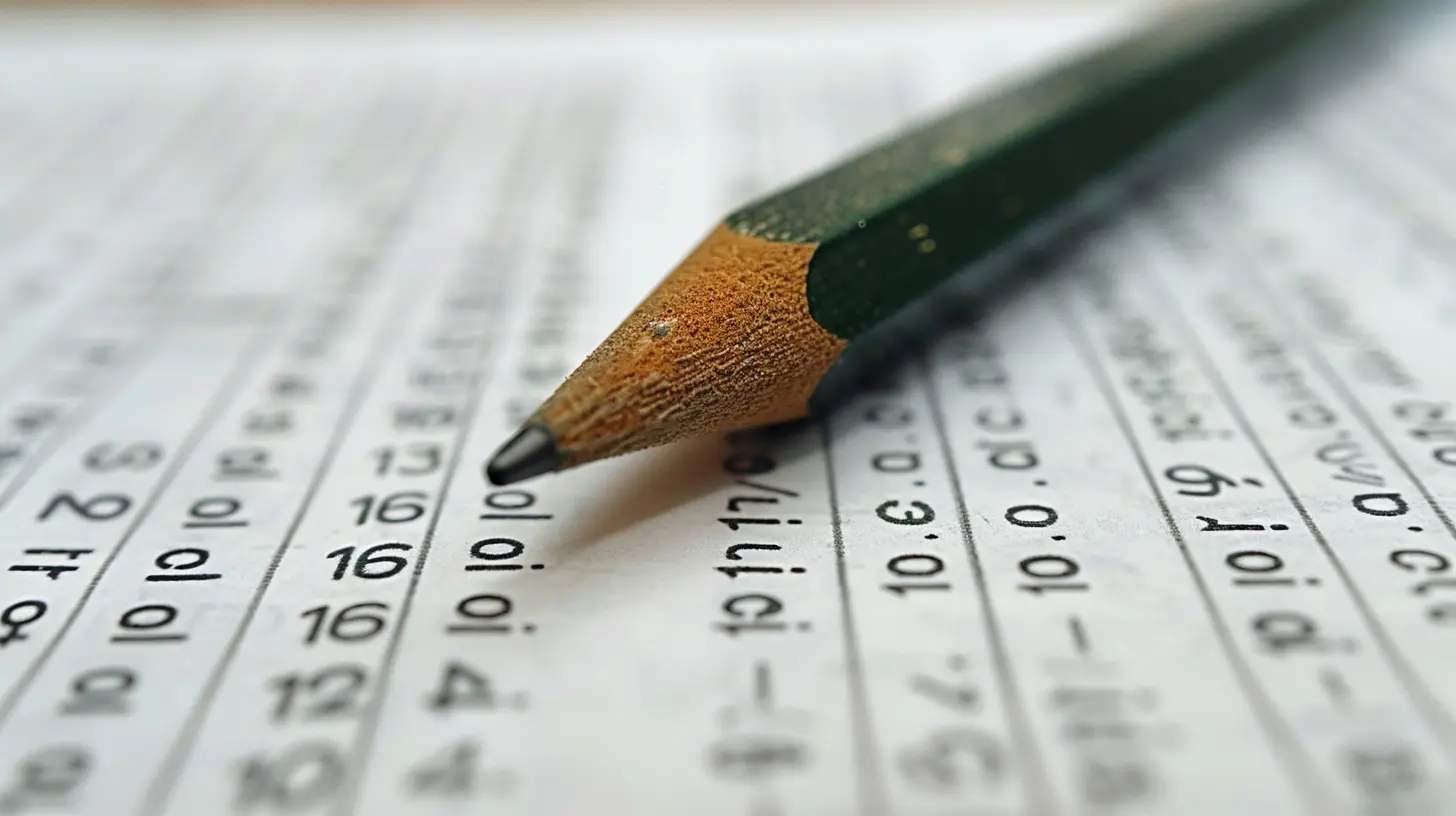How to Use Summative Assessment Data to Improve Instruction
25 July 2025
Let’s face it—summative assessments can feel like the final boss in a video game. After weeks or months of teaching, the big test shows up, and we all cross our fingers, hoping our students "get it." But here's the thing: those end-of-unit or end-of-year tests aren’t just a finishing line. They’re actually gold mines of information. If you’re only using them to assign grades, you're leaving a lot of potential untapped.
So, how can we flip the script and use summative assessment data to inform and improve instruction? Grab your virtual magnifying glass—we’re about to dig deep into strategies, mindsets, and simple adjustments that can turn data into a powerful instructional compass.

What Exactly Is Summative Assessment?
Before we jump into using the data, let’s first clear the air. A summative assessment is meant to evaluate student learning at the end of an instructional period. Think final exams, standardized state tests, end-of-unit projects, or big research papers. These assessments are like snapshots of what students know at a specific point in time.The downside? They often arrive after the learning has supposedly happened. But that doesn’t mean they have to be the end of the road. With the right approach, these assessments can help us reshape the journey.

Digging Into the Data: More Than Just Percentages
Okay, so you’ve got the results—now what?Looking at summative data is kind of like staring at a map after a road trip. You see the route you took, the detours, and maybe even the flat tires along the way. But you also see where you could’ve taken a better turn.
Let’s break down the most effective ways to examine the data:
1. Disaggregate the Data
This fancy term just means breaking things down. Don’t just look at the final grade—dig into:- Performance on specific standards or learning objectives
- Question-by-question results
- Performance by student subgroups (ELLs, special ed, gifted, etc.)
- Trends across different classrooms or schools
When you look at the pieces instead of the whole, patterns start to emerge. Maybe 75% of your students bombed a question tied to understanding cause and effect. That’s a sign—not just of where your students are struggling, but maybe also where your instruction could improve.
2. Compare Against Formative Data
This is where things get real. You’ve been collecting formative assessment data all along—exit tickets, quizzes, class discussions. Compare that to the summative results. Do they line up?If a student did great in class but tanked the final, that’s worth digging into. Did they misunderstand the format? Was there anxiety? Or was the formative assessment not deep enough to really gauge understanding?
That disconnect can help you refine how you’re checking for understanding during the learning phase—not just at the end.

What Story Is the Data Telling?
Imagine your summative assessment as a book. The pages are filled with student answers. If you read closely, you’ll find a storyline. What are the characters (your students) doing well? Where are the plot holes (instructional gaps)? And what’s the theme (the overall performance)?Identify Instructional Gaps
Let’s say a majority of students missed questions tied to a certain standard. That’s not just on them—it’s a message. Maybe the instructional strategy didn't click. Or the pacing was too fast. The data is basically raising its hand saying, “Hey! We need a do-over here!”So instead of just moving on, pause. Reflect. Ask yourself:
- Did I spend enough time on that topic?
- Did I teach it in multiple ways?
- Did students get enough practice?
This isn’t about blame—it’s about being real and adaptable.
Spot Strengths Too!
It’s easy to focus on what went wrong—but also notice what went right. If students crushed a specific skill, it tells you your teaching method worked! File that away in your “winning moves” folder and use it again.Maybe that group project you were on the fence about turned out to be the perfect way to teach persuasive writing. Celebrate that.

Turning Data Into Action: Making Real Instructional Changes
So you’ve read the data. You’ve found the gaps and the wins. Now it’s time for the fun part—taking action.1. Reteach—But Smarter
Instead of repeating the same lesson the same way, switch it up. Use the data to decide:- What needs to be retaught?
- Which students need it?
- What method didn’t work last time?
For example, if your lecture on fractions flopped, try a hands-on activity or gamify the lesson. Do small-group reteach sessions for the specific students who need it, instead of slowing down the whole class.
2. Adjust Future Planning
Summative assessment data isn't just about the past—it’s a guide for the future. Use it to tweak your scope and sequence. If a standard consistently trips kids up year after year, give it more time next year. Or teach it earlier and spiral back to it more frequently.Think of this as editing your teaching playbook.
3. Group Students Strategically
Use data to inform how you group students for activities, projects, or interventions. Grouping by ability, background knowledge, or even learning styles can nudge students forward.If five students struggled with interpreting graphs, make a mini-workshop just for them. Everyone benefits from instruction tailored to their unique needs.
4. Collaborate With Colleagues
Don't work in a vacuum. Share your data insights with your grade-level teammates or content-area PLC. If your whole team notices that students are bombing the figurative language section year after year, you can brainstorm better strategies together.Sometimes another teacher’s perspective is all you need to see things more clearly.
Mindset Shift: It’s Not About the Grade, It’s About the Growth
Let’s be honest—grades matter. But if we only look at summative assessments to assign scores, we miss the point. The true value of these assessments is how they help us help our students grow.Embrace a Growth Mindset Culture
Our students pick up on our attitudes. If we treat assessments like an end-all, they will too. But if we communicate that assessments are tools for learning rather than judgment, it changes how they view failure and success.Talk to your students about their data. Review their results with them. Help them reflect on what they did well and where they can improve. Make it part of your classroom DNA.
Don’t Wait for the Next Test
Use your summative data immediately. Don’t shelve it until next year. Reflect on it during curriculum planning and integrate the learning into your next unit. Be proactive, not reactive.
Addressing Real Challenges With Summative Data
Let’s not sugarcoat it—using summative assessment data effectively isn’t always easy. You’ve got limited time, a packed curriculum, and maybe even district mandates that are out of your control.But small, intentional changes can go a long way.
Keep It Student-Centered
Don’t just use data to prove what students don’t know. Use it to understand them better. Look beyond the numbers to the people behind them.Sometimes a low score isn't about not knowing, but about test anxiety, home distractions, or even hunger that day. When you use data with empathy, you make stronger instructional choices.
Use Technology for Easier Analysis
There are tons of tools out there—Google Sheets, data dashboards, apps that aggregate results. Use them! Technology can help you visualize trends and save time. Just make sure you're not letting the tech do all the thinking—still stay connected to the story behind the data.Final Thoughts: Data is Just the Beginning
At the end of the day, summative assessment data is just a tool. It’s not the villain or the hero—it’s the mirror. What you do after you look into it is what counts.No test score can define your teaching, and no one number can define a student. But used wisely, summative data can help you teach with more clarity, target your instruction, and ultimately, help your students achieve more.
So, next time you’re staring at a stack of test scores, don’t sigh and file ‘em away. Instead, roll up your sleeves, get curious, and let the data lead the way to better learning.
all images in this post were generated using AI tools
Category:
Summative AssessmentAuthor:

Fiona McFarlin
Discussion
rate this article
1 comments
Jolene Reed
Empower learning, transform your teaching!
August 9, 2025 at 12:25 PM

Fiona McFarlin
Thank you! Using summative assessment data effectively can indeed empower both learning and teaching transformation.


